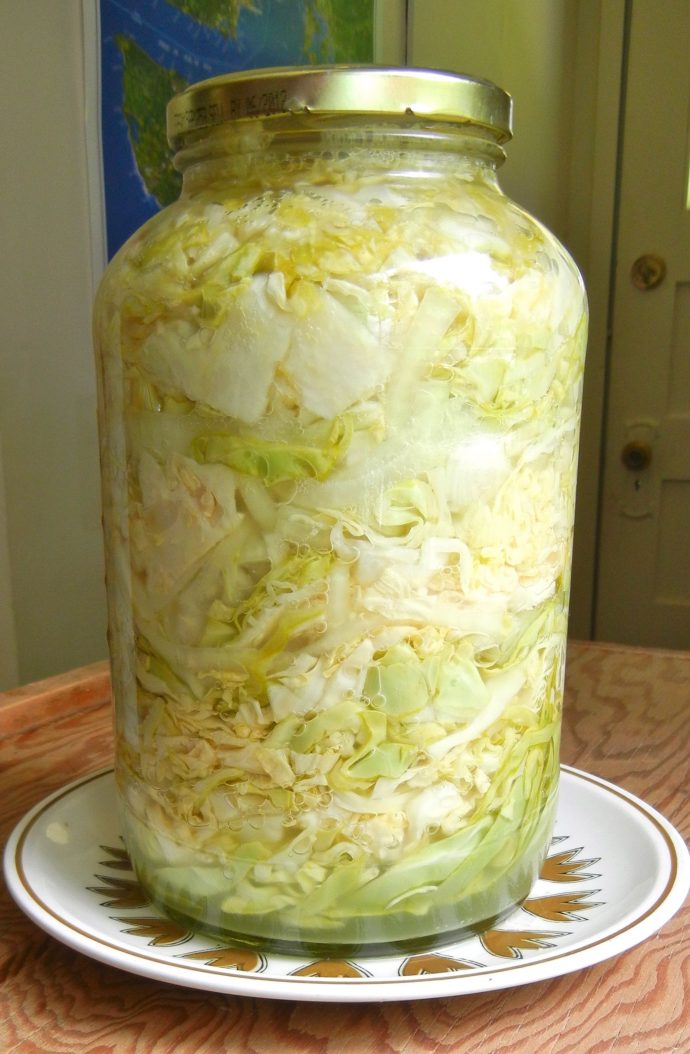Basic Sauerkraut
From Jill Ciciarelli, author of “Fermented: A Four Season Approach to Paleo Probiotic Foods”
- 1 head of cabbage (green, red, Napa, bok-choy, etc. or a combination of your choosing)
- 2 tablespoons of salt
Wash the cabbage and remove the first layer of outer leaves.
Cut the cabbage into thin, bite-sized strips using a knife or mandoline.
Put the cabbage shreds in a bowl and sprinkle with salt.
Massage the salt into the cabbage using your clean hands until the shreds are limp but still crispy and there is a significant amount of watery brine in the bowl. This step will take several minutes and up to a half-hour depending on the cabbage.
Reserve the brine that the cabbage will yield as you massage the salt into it.
Pack the cabbage into the wide-mouthed jar, pressing it down very firmly with your hand or the blunt end of a kitchen tool. Be sure to add the brine as well.
Once all of the cabbage is packed into the jar, ensure that the brine level is above the level of the cabbage. It is only below the brine line where fermentation takes place!
If the cabbage did not produce enough brine to cover it in the jar, add enough salted water to the vessel to bring the brine line above the vegetable material.
To make certain that the cabbage shreds stay below the brine line, weigh them down with a small pinch bowl, shot glass, or even the whole outer leaves of the cabbage.
Cover and store the jar in a cool and dark location. Check on it from time to time. If any material has poked its way above the brine line, remove and discard it. Wipe away any mold that may appear.
Taste test the sauerkraut periodically. You will note that the texture changes as the cabbage ferments, as does the flavor. When it is fermented to your liking, store it in the refrigerator and enjoy eating your homemade raw fermented sauerkraut.


